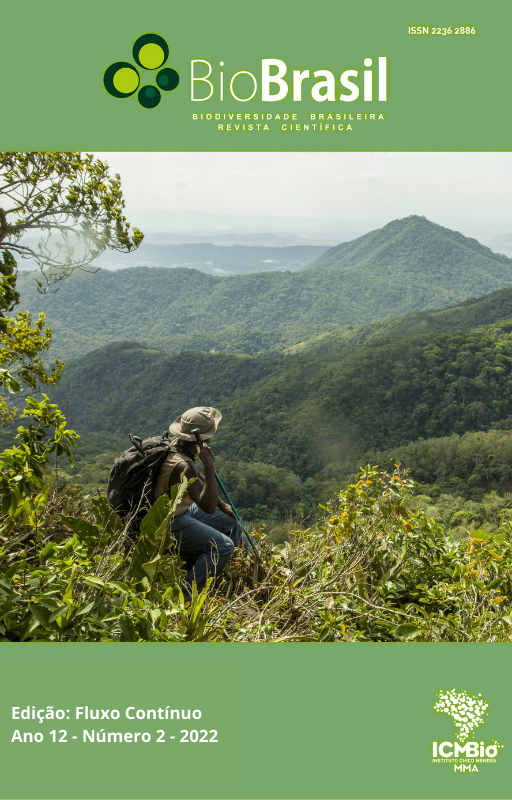Mortality and Sustainable Yields of the Blackfin Pacu Colossoma macropomum in the Middle Orinoco in Venezuela
DOI:
https://doi.org/10.37002/biodiversidadebrasileira.v12i2.1909Keywords:
Inland fisheries, population dynamicsAbstract
The importance of Colossoma macropomum in the artisanal fishery of the middle Orinoco in Venezuela has decreased considerably since the 1980s, when it became the most important species in the landings; which motivated the present work, on the evaluation of the current level of exploitation of the species, through studies of mortality and yield and biomass per recruit. Total mortality was determined by three methods based on length frequencies, while natural mortality was
calculated by six empirical equations, to reduce uncertainties in the estimation of fishing mortality.
Yield and biomass per recruit were determined by the Thompson and Bell length-frequency model,
which, together with the evaluation of the exploitation rate, demonstrated the existence of two
exploitation scenarios that included the existence of a resource at the limit of its exploitation, and a
resource in an overfished condition. Of these two scenarios, the most widely accepted was the one
that pointed to the existence of an overexploited resource, caused by the excessive capture of small
fish. The simulation of the yield and biomass per recruit model for a minimum catch size greater than
the current one, showed the existence of a resource that would be moderately exploited, and it can be
concluded that among the necessary measures to be taken for the conservation of the resource, the
increase in the length of the first catch should be of utmost importance.
Downloads
Published
Versions
- 03/03/2022 (2)
- 03/03/2022 (1)
Issue
Section
License
Os artigos estão licenciados sob uma licença Creative Commons Atribuição-NãoComercial-SemDerivações 4.0 Internacional (CC BY-NC-ND 4.0). O acesso é livre e gratuito para download e leitura, ou seja, é permitido copiar e redistribuir o material em qualquer mídia ou formato.





 v3-3-0-3-2-1-8-release.27
v3-3-0-3-2-1-8-release.27